Reviews
Harry Beaumont
USA, 1928
Credits
Review by Matt Bailey
Posted on 18 February 2009
Source TCM broadcast
Categories The Silence After Sound: Hollywood’s Last Silent Movies
Our Dancing Daughters is the movie that made Joan Crawford a star, but she was still a long way off from calcifying into the Kabuki-masked caricature her name now conjures up in our collective imagination. As the movie begins, we see only Joan’s legs as they materialize into a pair of flashy silver heels and then start to jitter and shimmy to a hot jazz tune. Suddenly, a pair of hands drop into view to pull a pair of diaphanous silk panties over the shoes and up the legs. If that image is not a clear enough indication that Our Dancing Daughters will not be the kind of staid, stagy production many people think of when the hear the phrase “silent movie,” the following image of Joan Crawford dancing wildly around a massive Art Deco set by Cedric Gibbons as she dresses herself in gown made almost entirely of fringe and a garish fur-trimmed wrap ought to do the trick. And if these scenes do not make it apparent that this is a different Joan Crawford from the rum-and-Pepsi-voiced matron she would become, the later scene of her ripping off half her dress as she manically Charlestons for a crowd just might.
The Joan Crawford we see in this movie, playing the character of Diana Medford, is a free spirit with bobbed hair and whisper thin eyebrows, showing a whole lot of skin. Our Dancing Daughters was meant to be, according to the marketing materials, “an up-to-the-minute narrative of our pleasure-mad generation,” and great effort was made to dress the actors in the newest fashions, cut their hair in the latest styles, and fill the soundtrack with the hottest music. Yet despite all its modern Jazz Age trappings, the film still feels like a relic of the ancient past: in a year in which the hottest trend of all was the talking picture, Our Dancing Daughters is mute. It is, however, far from silent, because it is one of a handful of strange hybrids that lived for just a few years: it is a sonorized film. While filmed as a silent picture, a soundtrack of music and effects was attached to the prints, allowing for popular songs and jazz riffs, crowd noise and car horns, and even a single line of dialogue (“Come on, Miss Diana! Show us your stuff!) all to be synchronized with the action of the film.
Conventional wisdom would have us believe that the transition to sound after the great success of The Jazz Singer was instantaneous and that audiences would have nothing to do with silent films after October 6, 1927, but the fact is that Our Dancing Daughters, which premiered almost a year later, was a massive success. We know from reading our film history textbooks that movie studios took years to transition to sound as they purchased sound recording and duplication equipment and soundproofed their studios, and that movie theater owners required just as much time to equip their facilities for sound playback. What those textbooks might not tell us, yet what we can clearly see from the success of Our Dancing Daughters, is that the moviegoing public’s appetite for films other than talkies had not waned. And it had not waned a year later when Our Modern Maidens, the first follow-up to Our Dancing Daughters and also a sonorized silent film, was released to equivalent success.
If the technology used to make and exhibit Our Dancing Daughters was a little out of date, the film’s plot is positively antique. It is the story of a love triangle between Diana, a carefree, well-adjusted girl who likes to have a good time but has no trouble saying “no” to a man; Ann, a scheming gold digger who maintains her virginity only so (and only until) she can snag a rich husband “who expects his money’s worth;” and Ben, a sweet, if doltish, newly-minted millionaire. Diana likes Ben because he’s not as frivolous as her other boyfriends, and Ben likes Diana because she is honest and vivacious. Ann plants doubt in Ben’s mind by insinuating that Diana’s free nature extends behind closed doors while Ann herself puts on a show of chastity and virtue, even as she surreptitiously drinks herself under the table. (The soundtrack here becomes a wry Greek chorus: as Ann disingenuously announces that she “never drinks,” the score launches into a refrain of “How Dry I Am,” complete with laughing, hiccuping trumpet.) Ann’s “marrying type” act is convincing enough for Ben to fall for, and as soon as they are married, Ann starts loading her arm with diamond bracelets (one for every month of “service”) and flirting with every man under sixty in the vicinity.
Diana, heartbroken, decides to go away to Europe for a while to forget about Ben, but not before their mutual friend Beatrice (the third “dancing daughter,” who has man trouble of her own) throws her a lavish party with all of her old friends. Ben, on the outs with Ann, shows up at the party in hopes of making amends with Diana. Just as Diana and Ben reconcile a kind of friendship, Ann blows in, drunk and staggering, and tries to play the innocent victim of an adulterous husband. Nobody’s buying what she’s selling, though, and all the guests leaves the now ruined party. Ann is too blotto to do anything but teeter at the top of a steep staircase where she berates the cleaning ladies for not having beautiful daughters to marry rich men so they no longer have to work. You can probably imagine what happens next. Two years later, Diana returns from Europe to Ben’s waiting arms, and “The End” is splashed across their smiling faces.
While Our Dancing Daughters is one of the films that marked the end of the illustrious silent era, it is also a film that ushered in a new “golden” era for film lovers: the pre-Code era. It is not nearly as racy as some films that would follow it in just a few years and cause a national uproar of prudery, but the film did run into problems with several state censor boards and was even banned by the mayor of Lynn, Massachusetts, who made his decision based solely on the advertising for the film: “The cuts advertising this show are indecent, immoral, and lascivious, and it is this character of entertainment that lowers to the very depths the movie picture shows,” he wrote to the theater planning to show the film. No other locality or state banned the film outright, but cuts were made in Ohio, Pennsylvania, Virginia, Kansas, Maryland, Illinois, and in several Canadian provinces as well. Newspapers in several states printed letters from citizens and editorials denouncing the film as (in the words of one editorial in the Newberry [South Carolina] Observer) “almost absolutely devoid of intellectual quality” and made by “exploiters of the sheerest animalism of sex.” It is easy to poke fun at these high-toned moralists eighty years later, but if Joan Crawford dancing in her panties and camisole put them over the edge in 1928, it’s not hard to see why films like Baby Face and Red Headed Woman nearly caused their heads to explode just a few years later, resulting in the rigidly enforced Production Code that stood for over thirty years.
In the end, Our Dancing Daughters is not great art. It was not at all innovative in terms of technique, story, aesthetic, or performance, and is surely only remembered by devotees of Crawford or her co-star Anita Page (whose cult is smaller but no less devoted and which included, at one point, Benito Mussolini). Yet it remains a curious artifact of a time when both the form and content of cinema were in flux, a film that negotiated great aesthetic and technological challenges as it pressed against the constraints of contemporary morality.
More The Silence After Sound: Hollywood’s Last Silent Movies
-
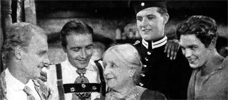
Four Sons
1928 -
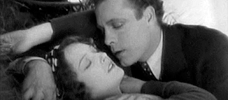
The Crowd
1928 -
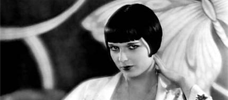
A Girl in Every Port
1928 -
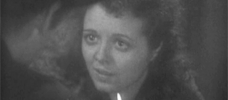
Street Angel
1928 -
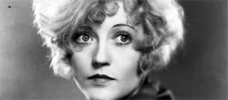
The Patsy
1928 -
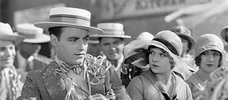
Lonesome
1928 -
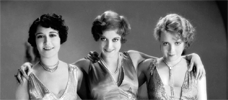
Our Dancing Daughters
1928 -
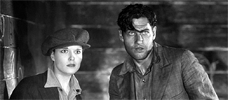
Beggars of Life
1928 -
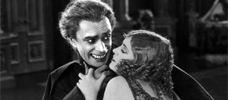
The Man Who Laughs
1928 -
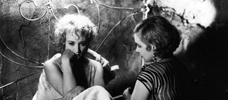
The Docks of New York
1928 -
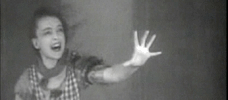
The Wind
1928 -
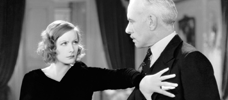
A Woman of Affairs
1928 -
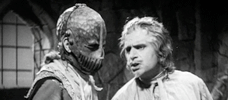
Iron Mask
1929 -
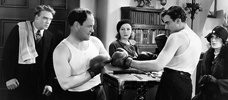
The Single Standard
1929 -
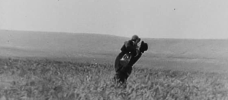
City Girl
1930 -
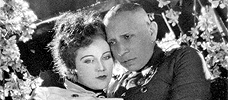
The Wedding March
1928
We don’t do comments anymore, but you may contact us here or find us on Twitter or Facebook.



